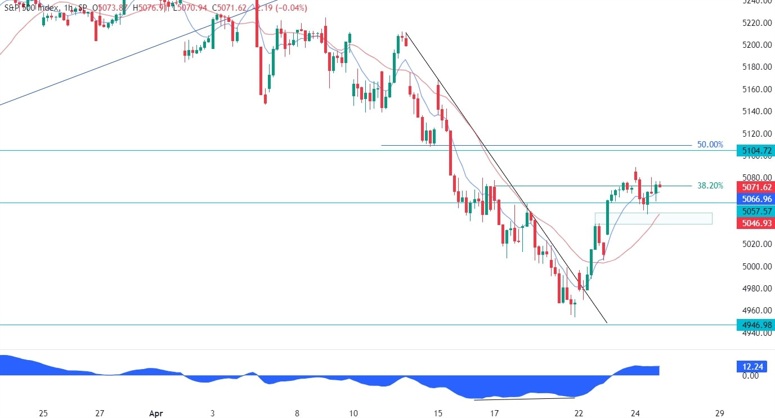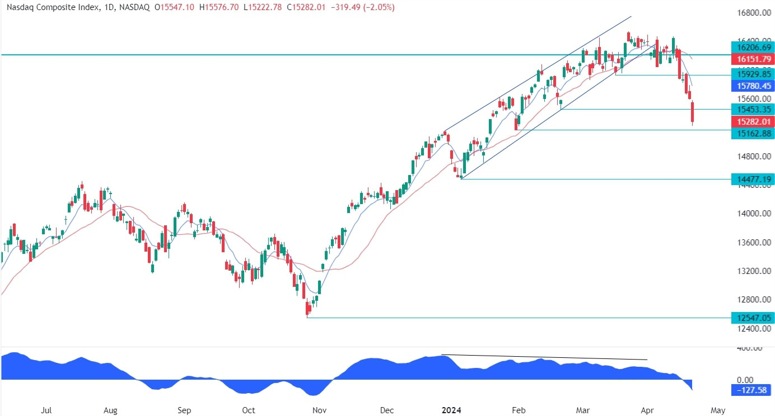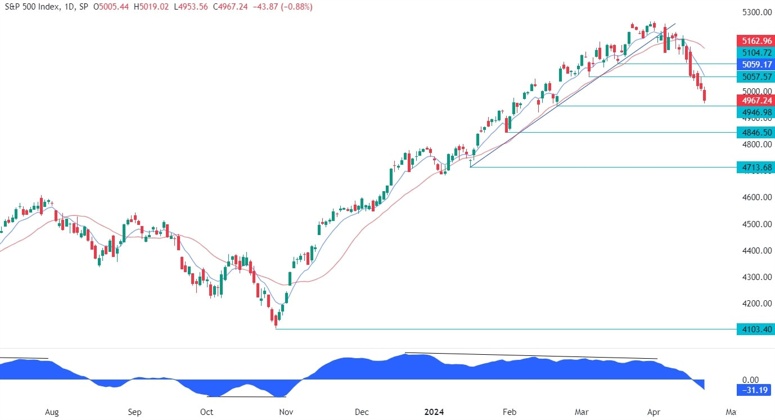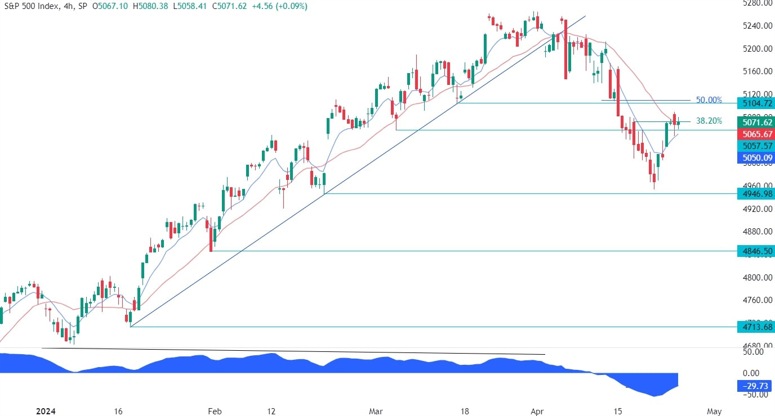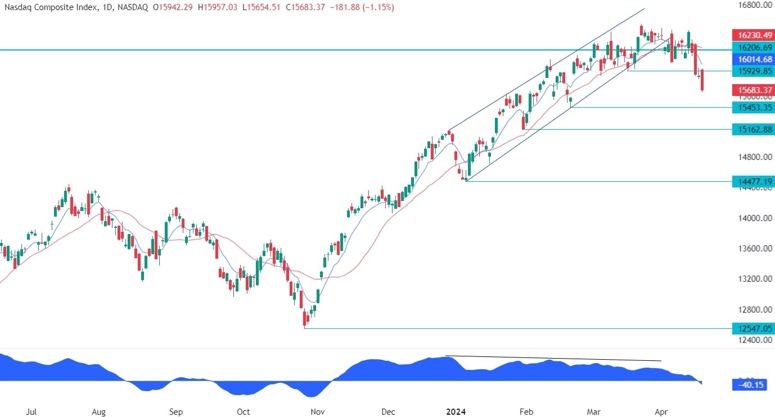US500-US SPX 500 Index
Parent Index
NA
Indices informations
Listed Exchanges
| NYSE |
| NASDAQ |
| Cboe BZX Exchange |
Related Instuments
| S&P 1500 |
| S&P Global 1200 |
| S&P 100 |
Sector Represented
| Information Technology |
| Health Care |
| Industrials |
| Consumer Discretionary |
| Energy |
Indices
- BSE SENSEX
- CAC 40
- CBOE NASDAQ-100 Volatility Index (VXN)
- CBOE Volatility Index (VIX)
- China50-FTSE China A50 Index
- DAX
- DAX PERFORMANCE-INDEX-GDAXI
- DE40-Germany 40 Index DAX
- Dollar Index USDX-DXY-DX-Dixie
- Dow Jones Industrial Average-DJIA
- EURO STOXX 50 SX5E
- FTSE 100 Index-UK100 Index
- Germany 30
- Hang Seng Index
- IBEX 35-Spain 35
- NASDAQ Composite
- NASDAQ-100
- Nikkei 225
- Russell 2000 Index
- S&P/ASX 200
- Singapore Blue Chip Index-STI
- Swiss Market Index (SMI) Switzerland Blue Chip Index
- TecDax Price Index
- TECHDE30-Germany Tech 30 Index
- US Tech 100 Index UT100
- US2000-US Small Cap 2000 Index
- US30-US Wall Street 30 Index
- US30M- US Wall Street 30 Index M
- US500-S&P 500 (GSPC, INX, SPX)
- US500-US SPX 500 Index
- US500M-S&P 500 Mini
- All Ordinaries
- Amsterdam Exchange Index AEX index
- ATX-Austrian Traded Index (ATX)
- BEL 20
- BELEX15
- BIRS
- BIST-Borsa Istanbul
- CROBEX
- EGX 30 Index Egypts Leading Stock Market Index
- FTSE All-Share Index
- FTSE Bursa Malaysia Index-KLCI Index
- FTSE MIB-FTSE MIB 40
- Índice Bursátil Caracas (IBC)
- Índice Bursátil de Capitalización-The General Index
- Indice de Precios y Cotizaciones
- KOSPI
- KSE 100 Index
- MDAX
- MERVAL
- MICEX-The MOEX Russia Index
- OBX Index
- OMX Copenhagen 20 (OMXC20)
- OMX Helsinki 25 (OMXH25)
- OMX Stockholm 30 (OMXS30)
- PSE Index (PSEi)
- PSI20-PSI-20
- S&P/NZX 50 Index
- S&P/TSX 60
- S&P/TSX Composite Index
- S&P/TSX Venture Composite Index
- SOFIX
- SSE Composite Index (上证综指) Shanghai Composite Index
- Straits Times Index (STI)
- SZSE Component Index (深证成指)
- TA-125 Tel Aviv 125 Index
- Taiwan Capitalization Weighted Stock Index (TAIEX)
- The Indice de Precio Selectivo de Acciones- IPC
- CBOE NASDAQ-100 BuyWrite Index (BXN)
- Hang Seng China H-Financials Index
- IBOVESPA-The Bovespa Index-Brazil Stock Exchange Index
- NASDAQ Financial-100
- SDAX – Small cap
- TecDAX
- aaa
- Amex Gold BUGS Index
- Amex Oil Index
- AScX index – Small cap
- ASE Weighted Index
- Athex 20
- Barrons 400 Index
- BELEXline
- BET-10
- BSE DCI
- BSE FCI
- BUMIX – Mid cap
- BUX – Large cap
- CA60-Canada 60 Index
- CAC All Share
- CAC All-Tradable
- CAC Large 60
- CAC Mid & Small
- CAC Mid 60
- CAC Next 20
- CAC Small
- Capital Markets Index
- CASPI
- CBOE DJIA BuyWrite Index (BXD)
- CBOE S&P 500 BuyWrite Index (BXM)
- CBV Index
- CBV Real Estate Index
- CECEEUR
- Central European Blue Chip Index – Regional large cap
- ChinaH-Hong Kong China H-shares Index
- COLCAP
- Colombo Stock Exchange Sector indices (CSE Sectors)
- CROBIS
- CSC X
- CSE 30
- CSE50
- CSI
- CSI 100 Index (中证100指数)
- CSI 300 Index (沪深300指数)
- Dow Jones Global Titans 50
- Dow Jones Transportation Average
- Dow Jones Utility Average
- DSE
- DSEX
- DSM200
- EGX 100 Index
- EGX 50 Index
- EGX 70 Index
- ERS10
- FIRS
- FT 30 Index
- FTSE 350 Index
- FTSE AIM All-Share Index
- FTSE AIM UK 50 Index
- FTSE All-World index series
- FTSE Fledgling Index
- FTSE Italia Mid Cap
- FTSE MID 250 Index
- FTSE SmallCap Index
- FTSE techMark Index
- FTSE/Athex Large Cap
- FTSE/JSE All Share Index
- FTSE/JSE Top 40 Index
- FTSEurofirst 300 Index
- FTSEurofirst Euro Supersector Indices
- GSE All-Share Index
- Hang Seng China Enterprises Index
- Hang Seng China-Affiliated Corporations Index
- HK50
- IDX Composite
- IGBC
- IPSA
- ISEQ 20-The Ireland Overall Stock Exchange Index-ISEQ20
- IT40-Italy 40 Index
- Jakarta Islamic Index (JII)
- Jamaica Stock Exchange (JSE)
- KASE
- KMI 30 Index
- KOSDAQ
- KSE All Share Index
- KSE-30 Index
- Kuala Lumpur Composite Index
- LASI
- LQ-45
- LuxX Index – Luxembourg Stock Exchange
- MADEX index
- Madrid Stock Exchange General Index
- MASI index
- MESDAQ
- MIDDE50-Germany Mid 50 Index
- MIDDE60-Germany Mid 60 Index
- Milanka Price Index (MPI)
- MSCI EAFE
- MSCI GCC
- MSCI Hong Kong Index
- MSCI World
- MSM-30
- NEPSE Index – Nepal Stock Exchange
- NETH25
- NIFTY 100 LOW VOLATILITY 30
- NIFTY 200
- NIFTY ALPHA 50
- NIFTY BANK
- NIFTY CPSE
- NIFTY ENERGY
- NIFTY FINANCE
- NIFTY FMCG
- NIFTY INDIA CONSUMPTION
- NIFTY INFRA
- NIFTY IT
- NIFTY MEDIA
- NIFTY METAL
- NIFTY MIDCAP 100
- NIFTY MIDCAP 50
- NIFTY MIDCAP LIQUID 15
- NIFTY MIDSMALLCAP 400
- NIFTY MNC
- NIFTY Next 50
- NIFTY PHARMA
- NIFTY PSE
- NIFTY PSU BANK
- NIFTY PVT BANK
- NIFTY REALTY
- NIFTY SERV SECTOR
- NIFTY SMALLCAP 100
- NIFTY SMALLCAP 250
- NIFTY SMALLCAP 50
- NIFTY100 EQUAL WEIGHT
- NIFTY100 LIQUID 15
- NIFTY200 QUALITY 30
- NIFTY50 EQUAL WEIGHT
- Nor25-Norway 25 Index
- NSE 30 Index
- NSE All Share Index
- NSE NIFTY 50
- NYSC Arca Major Market Index
- NYSE American Composite Index
- OMX Iceland 15 (discontinued)
- OMX Iceland 6
- OMX Stockholm PI (OMXSPI)
- OMX Vilnius (OMXV)
- OTCM QX ADR 30 Index
- Palisades Water Index (ZWI)
- PFTS index
- Philadelphia Gold and Silver Index
- PHLX Semiconductor Sector
- PSE All Shares Index
- PSE Financials Index
- PSE Mining and Oil Index
- PSI/GERAL
- PX Index
- RTS Index (RTSI)
- Russell 1000
- Russell 2500
- Russell 3000
- Russell MidCap
- Russell Small Cap Completeness
- S&P 100
- S&P 1500
- S&P Asia 50
- S&P BSE 500
- S&P Europe 350
- S&P Global 100
- S&P Global 1200
- S&P Latin America 40
- S&P MidCap 400
- S&P MidCap 400/BARRA Growth
- S&P MidCap 400/BARRA Value
- S&P SmallCap 600
- S&P SmallCap 600/BARRA Growth
- S&P SmallCap 600/BARRA Value
- S&P Vietnam 10 Index
- S&P/ASX 20
- S&P/ASX 300
- S&P/ASX 50
- SA40-South Africa 40 Index
- SBF 120
- SE30-Sweden 30 Index
- SET Index
- SET100 Index
- SET50 Index
- Slovak Share Index
- SMI Expanded
- SMI MID
- SPBLPGPT
- SSE 180 Index (上证180指数)
- SSE 50 Index (上证50指数)
- STOXX Europe 600
- SWI20-Switzerland 20 Index
- Swiss Leader Index (SLI)
- Swiss Performance Index (SPI)
- SZSE 100 Index (深证100指数)
- SZSE 200 Index (深证200指数)
- SZSE 300 Index (深证300指数)
- TA-35 Index
- TA-90
- Tadawul
- TEDPIX
- TEPIX
- The Global Dow
- The GSE Composite Index.
- THETAUSD Theta Network Token vs US Dollar
- TOPIX
- Trinidad and Tobago Stock Exchange (TTSE)
- UBS 100 Index
- Value Line Composite Index
- VN Index
- WIG-Warszawski Indeks Giełdowy
- WIG30
- Wilshire 4500
- Wilshire 5000
- Zimbabwe Industrial Index
- Zimbabwe Mining Index
The US SPX 500 Index, also known as the S&P 500 Index, is one of the most widely followed stock market indices in the world. It consists of 500 large-cap companies listed on various US stock exchanges, representing a broad range of industries and sectors.
Importance and Purpose
The SPX 500 Index serves as a benchmark for the overall performance of the US stock market. It provides investors, traders, and analysts with a snapshot of the health and direction of the American economy. As such, it plays a crucial role in guiding investment decisions and assessing the market sentiment.
This index is market-capitalization-weighted, which means that the weight of each constituent company is determined by its market value. This methodology ensures that larger companies have a greater impact on the index’s movements, reflecting their relative significance in the economy.
Index Composition
The constituents of the S&P 500 are regularly reviewed and adjusted to ensure that they accurately represent the US equity market. The selection process includes strict criteria such as market capitalization, liquidity, financial viability, and sector representation.
Companies listed on major US exchanges, including the New York Stock Exchange (NYSE) and NASDAQ, are eligible for inclusion in the index. Some prominent companies that are part of the SPX 500 Index include Apple, Microsoft, Amazon, Facebook, and Alphabet (Google).
Performance and Tracking
Investors and market participants closely monitor the performance of the S&P 500 Index to gauge the overall market trend. It acts as a reference point against which individual stocks, mutual funds, and other investment vehicles are compared. Many index-tracking funds, such as exchange-traded funds (ETFs), replicate the performance of the SPX 500 Index to provide investors with diversified exposure to the US stock market.
The index is calculated using a base value of 10 starting from its inception in 1941. This allows for easy tracking and comparison over time. The S&P 500 Index is widely regarded as a reliable indicator of the overall direction and performance of the US equity market.
Impact on Global Markets
Due to its significance, the movements of the S&P 500 Index often have a ripple effect on global financial markets. As one of the largest and most influential stock indices worldwide, changes in the SPX 500 can impact investor sentiment and influence trading decisions across borders.
For example, when the index experiences a significant decline, it may trigger selling pressure not only in US markets but also in international exchanges. Similarly, positive developments in the S&P 500 Index tend to boost confidence and encourage investment activity globally.
Conclusion
The US SPX 500 Index, or the S&P 500 Index, is an essential barometer of the US stock market’s health and performance. It comprises 500 large-cap companies and serves as a benchmark for investors and analysts alike. Its influence extends beyond the United States, impacting global financial markets. Understanding and monitoring the movements of the S&P 500 Index is crucial for anyone with an interest in the world of finance and investing.
US SPX 500 Index: An Overview
The US SPX 500 Index, commonly referred to as the S&P 500 (SPX), is a market capitalization-weighted index that measures the performance of 500 large-cap stocks listed on various US exchanges. It is one of the most widely followed equity indices and acts as a benchmark for the overall health of the US stock market.
The S&P 500 was first introduced in 1957 and has since become an essential tool for investors, traders, and financial professionals. Its constituents represent a diverse range of sectors, including technology, finance, healthcare, consumer discretionary, and many others, providing a comprehensive view of the US economy.
Key Features of the S&P 500
Market Capitalization Weighting
Unlike some other indices that use price weighting or equal weighting methodologies, the S&P 500 is weighted by the market value of its constituent companies. This means that larger companies have a higher impact on the index’s performance. The market capitalization weighting ensures that changes in the index are primarily driven by the performance of major corporations.
Broad Representation of the US Economy
The S&P 500 covers approximately 80% of the total US stock market capitalization. As a result, it provides a reliable snapshot of the broader economy, making it an effective gauge of economic trends and investor sentiment. Changes in the index can reflect shifts in consumer behavior, corporate earnings, and overall market conditions.
Index Rebalancing
The S&P 500 undergoes periodic rebalancing, typically on a quarterly basis. During this process, companies may be added or removed based on certain criteria, such as market capitalization, liquidity, and sector representation. The rebalancing ensures that the index remains up-to-date, reflecting the changing dynamics of the US stock market.
Investment Opportunities
The S&P 500 offers investors exposure to a diverse range of large-cap stocks across various sectors, making it an attractive option for those looking to invest in the US market as a whole. Many financial products, such as index funds and exchange-traded funds (ETFs), track the performance of the S&P 500, allowing investors to gain broad market exposure with a single investment.
Significance and Impact
The S&P 500 is widely regarded as a credible barometer of the US stock market’s overall performance. Its movements are closely watched by market participants, including individual investors, institutional investors, and analysts. Changes in the index can have a cascading effect on other financial markets globally, influencing investor sentiment and portfolio allocations.
Moreover, the S&P 500 is often used as a benchmark to evaluate the performance of mutual funds, hedge funds, and other investment vehicles. Fund managers strive to outperform the index by generating higher returns for their clients. As a result, the S&P 500 serves as a reference point for measuring the success of many investment strategies and serves as a yardstick for comparing investment performance.
In Conclusion
The US SPX 500 Index, or S&P 500, is a vital indicator of the health and performance of the US stock market. With its broad representation of large-cap stocks from various sectors, it provides valuable insights into the overall state of the economy. Its market capitalization weighting, periodic rebalancing, and widespread use as a benchmark make it a crucial tool for investors seeking exposure to the US market or evaluating investment performance.
US SPX 500 Index Key Data
The US SPX 500 Index, also known as the S&P 500, is one of the most widely followed stock market indices in the world. It measures the performance of 500 large-cap companies listed on the New York Stock Exchange (NYSE) or NASDAQ Stock Market based on market capitalization.
Composition and Sector Allocation
The index is composed of companies from various sectors, including information technology, healthcare, financials, consumer discretionary, industrials, and many others. However, the weightage of each sector may vary over time based on market trends and economic conditions.
As of the latest data available, the S&P 500 index has a diverse composition with the following sector allocations:
- Information Technology: X%
- Healthcare: Y%
- Financials: Z%
- Consumer Discretionary: A%
- Industrials: B%
- Other Sectors: C%
Market Capitalization and Weighting Methodology
The S&P 500 is a market-weighted index, which means that companies with higher market capitalizations have a greater impact on the index’s performance. The market cap of each constituent is calculated by multiplying its share price by the number of outstanding shares.
The index uses float-adjusted market capitalization to ensure that only readily available shares are considered for calculation. This methodology helps in avoiding distortions caused by the inclusion of restricted shares.
Performance and Historical Data
The S&P 500 index is often used as a benchmark for the overall performance of the US stock market. It provides insights into the health of the economy and investor sentiment. Investors, analysts, and fund managers closely monitor its performance to make informed decisions.
Over time, the S&P 500 index has shown significant growth despite occasional market downturns. Historical data shows that it has delivered an average annualized return of around X% over the long term, outperforming many other indices and individual stocks.
Inclusion and Exclusion Criteria
The S&P 500 index undergoes periodic reviews for inclusion and exclusion of companies based on specific criteria. Some of the key factors considered during these reviews include market capitalization, liquidity, sector representation, and financial viability.
Companies listed in the S&P 500 enjoy increased visibility and credibility, often attracting more investments from institutional and individual investors.
Conclusion
The US SPX 500 Index, or the S&P 500, plays a crucial role in measuring the performance of the US stock market. Its diverse composition, market-weighted methodology, and historical data make it a widely followed benchmark. Investors and market participants rely on the index for insights into the overall health of the economy and as a reference for investment decisions.
Fundamental Summary
US-500
0.00000


Strength
US-500
0.00000


Strength
US-500
0.00000


Strength
US-500
0.00000


Strength
US-500
0.00000


Strength
US-500
0.00000


Strength
US-500
0.00000


Strength
US-500
0.00000


Strength
-
US-500
Minute5
 long
longResistance4 4201.50000 Resistance3 4242.85000 Resistance2 4256.00000 Resistance1 4313.20000 Quote Price 0.00000 Support1 4316.70000 Support2 13.30000 Next Trade2023-11-03 00:01:18 -
US-500
Minute15
 short
shortQuote Price 0.00000 Support1 4242.85000 Support2 4201.50000 Support3 4171.75000 Support4 4152.70000 Support5 4147.00000 Support6 4132.60000 Next Trade2023-11-03 00:01:21 -
US-500
Minute30
 long
longQuote Price 0.00000 Support1 4242.85000 Support2 4171.75000 Support3 4152.70000 Support4 4147.00000 Support5 4132.60000 Support6 4102.40000 Next Trade2023-11-03 00:01:23 -
US-500
Hour1
 long
longResistance2 4102.40000 Resistance1 4171.75000 Quote Price 0.00000 Support1 4320.90000 Support2 4340.16000 Support3 4394.10000 Support4 4398.24000 Next Trade2023-11-03 00:01:25 -
US-500
Hour4
 short
shortQuote Price 0.00000 Support1 4320.90000 Support2 4398.24000 Support3 4515.64000 Support4 4539.94000 Support5 4597.00000 Support6 4606.77000 Next Trade2023-11-03 00:01:27 -
US-500
Daily
 long
longResistance3 4606.77000 Resistance2 4539.94000 Resistance1 4398.24000 Quote Price 0.00000 Support1 4102.40000 Support2 4046.00000 Support3 3763.37000 Next Trade2023-11-02 16:01:13 -
US-500
Weekly
 short
shortResistance2 4818.32000 Resistance1 4606.77000 Quote Price 0.00000 Support1 4102.40000 Support2 3492.66000 Support3 2183.82000 Support4 2032.01000 Next Trade2023-10-29 16:01:40 -
US-500
Monthly
 short
shortResistance4 1074.77000 Resistance3 1807.40000 Resistance2 2183.82000 Resistance1 3492.41000 Quote Price 0.00000 Support1 4606.77000 Support2 4818.32000 Next Trade2023-10-31 16:02:40
- Coming soon!!
Technical Summary
US-500
0.00000


Strength
US-500
0.00000


Strength
US-500
0.00000


Strength
US-500
0.00000


Strength
US-500
0.00000


Strength
US-500
0.00000


Strength
US-500
0.00000


Strength
US-500
0.00000


Strength
-
US-500
Minute5
 long
longResistance4 4201.50000 Resistance3 4242.85000 Resistance2 4256.00000 Resistance1 4313.20000 Quote Price 0.00000 Support1 4316.70000 Support2 13.30000 Next Trade2023-11-03 00:01:18 -
US-500
Minute15
 short
shortQuote Price 0.00000 Support1 4242.85000 Support2 4201.50000 Support3 4171.75000 Support4 4152.70000 Support5 4147.00000 Support6 4132.60000 Next Trade2023-11-03 00:01:21 -
US-500
Minute30
 long
longQuote Price 0.00000 Support1 4242.85000 Support2 4171.75000 Support3 4152.70000 Support4 4147.00000 Support5 4132.60000 Support6 4102.40000 Next Trade2023-11-03 00:01:23 -
US-500
Hour1
 long
longResistance2 4102.40000 Resistance1 4171.75000 Quote Price 0.00000 Support1 4320.90000 Support2 4340.16000 Support3 4394.10000 Support4 4398.24000 Next Trade2023-11-03 00:01:25 -
US-500
Hour4
 short
shortQuote Price 0.00000 Support1 4320.90000 Support2 4398.24000 Support3 4515.64000 Support4 4539.94000 Support5 4597.00000 Support6 4606.77000 Next Trade2023-11-03 00:01:27 -
US-500
Daily
 long
longResistance3 4606.77000 Resistance2 4539.94000 Resistance1 4398.24000 Quote Price 0.00000 Support1 4102.40000 Support2 4046.00000 Support3 3763.37000 Next Trade2023-11-02 16:01:13 -
US-500
Weekly
 short
shortResistance2 4818.32000 Resistance1 4606.77000 Quote Price 0.00000 Support1 4102.40000 Support2 3492.66000 Support3 2183.82000 Support4 2032.01000 Next Trade2023-10-29 16:01:40 -
US-500
Monthly
 short
shortResistance4 1074.77000 Resistance3 1807.40000 Resistance2 2183.82000 Resistance1 3492.41000 Quote Price 0.00000 Support1 4606.77000 Support2 4818.32000 Next Trade2023-10-31 16:02:40


